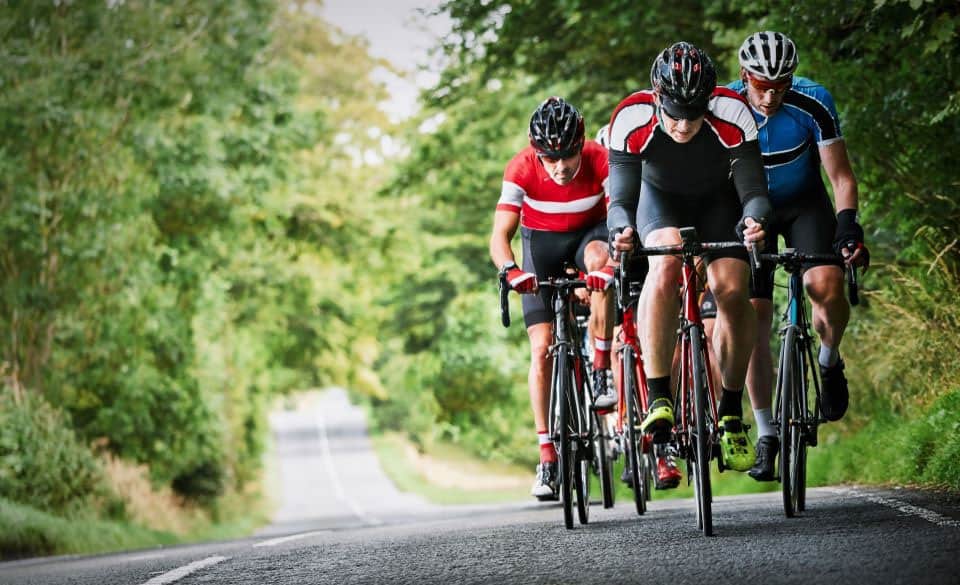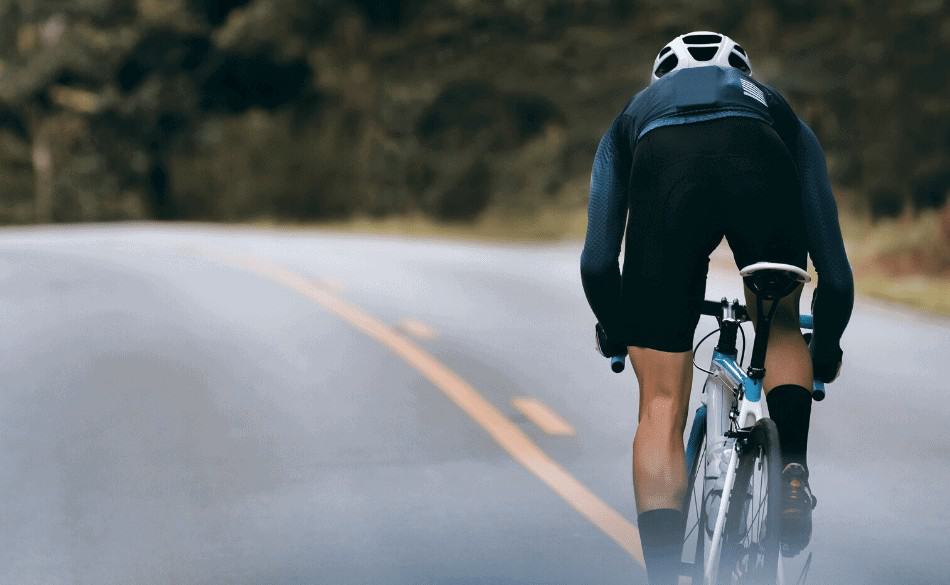
Special Cycling Disciplines – Hill Climbing And Sprinting
Page Contents
Hill Climbing
We all want to be better climbers and there are countless sessions that you can practice to maximize your performance.
Whatever you do, it will be painful — hills certainly hurt. Many events we ride include hills and being able to stay with attacks or indeed initiate them requires you to climb well and incur pain, so you may as well get used to it. An interval session that follows a format of easy/medium/hard is going to get very painful as the session gets progressively nastier.
A good hill climb session would be to select a hill of medium grade (about 6–8 percent), which takes anywhere between 3 and 10 minutes to ride up.
Split the hill into three zones.
1: Ride the first 50 percent of the hill at a rate of perceived exertion (RPE) of 7 out of 10.
2: Ride the next 30 percent of the hill at an RPE of 8.
3: Ride the final 20 percent of the hill at an RPE of 9.
When riding the hill focus on perceptible step-ups in intensity between the three stages and, if feeling good, add in a fourth, which is a full-on RPE 10 sprint over the top of the hill for the final 20m when you are completing the first set in a fresh condition. Recover by spinning back easily to the bottom of the hill and repeating it all over again two or three times.
You can make it more interesting by varying the gradient and length. You may want to Practice riding the first set in the saddle, second set out of the saddle and the third set a combination of both.
Remember RPE is subjective — a measure of how hard you think the effort is: 7 is tough, 8 is uncomfortably hard and 9 is when you think it can’t possibly be any harder. Of course, 10 is a maximum, full-on sprint effort.
Sprinting
Most road races, though not all, are won with a sprint, especially the circuit events run on closed circuits. So being good at sprinting, compared to your competitors, gives you a big advantage in the closing stages of a race and is also very useful if you have to bridge gaps, or indeed break away without towing the entire field with you.
Like climbers, sprinters are born, not made, and a product of their genes. Normally sprinters will be more heavily muscled and equipped with a high proportion of muscle fibers (maybe 75 percent) of type II white, fast-twitch muscle fibers.
These fibers have a high anaerobic capacity but low aerobic capacity. Put simply, they provide explosive power and high top-end speed but fatigue quickly.
As a road rider aiming to improve your anaerobic capacity, you train for sprinting by sprinting. Practice by sprinting from a fast-rolling start by riding in high gear for 10–15 seconds flat out.
Recover by riding gently for three minutes and repeating again six to ten times. Although not terribly fatiguing, this training drill is surprisingly effective. Another good session is to find a road with a dip either side.
Hurtle down one side and go flat out on a high gear up the other side.
Rest for a minute or two and repeat in the other direction, and again repeat the exercise for a total six to ten times. It is important to avoid wasting energy by not throwing your bike all over the road, keeping elbows tucked in and arms pulling up, not outwards.
Practice sprinting as often as possible, both in and out of the saddle. Work on explosive power as well by jumping as hard as you can in a high gear.
In a race, the way to sprint will vary considerably according to the circumstances and the strengths of the riders around you. If you can get a lead out then all well and good, but don’t be afraid to go from the front. With indexed geared systems it’s much easier to change up whilst hurtling towards the line.
Tapering
Before a big targeted event is essential that you avoid tiredness and arrive fresh. An ideal taper is one that produces lots of rest but very little detraining.
Five rules to follow to achieve a good taper
• The taper period should last a week.
• Reduce the total amount of training by about 50 percent, so if you normally spend 8 hours per week training then reduce to 4 hours.
• Frequency of training should remain unchanged.
• The intensity should remain high as before.
• All activities should be specific to the discipline — in other words, no running, long walks, swimming or playing other sports to avoid muscle injuries. Getting the taper right is difficult, as can be seen with our Olympic athletes. You want to arrive at the start line raring to go but not tired from your previous schedule.




